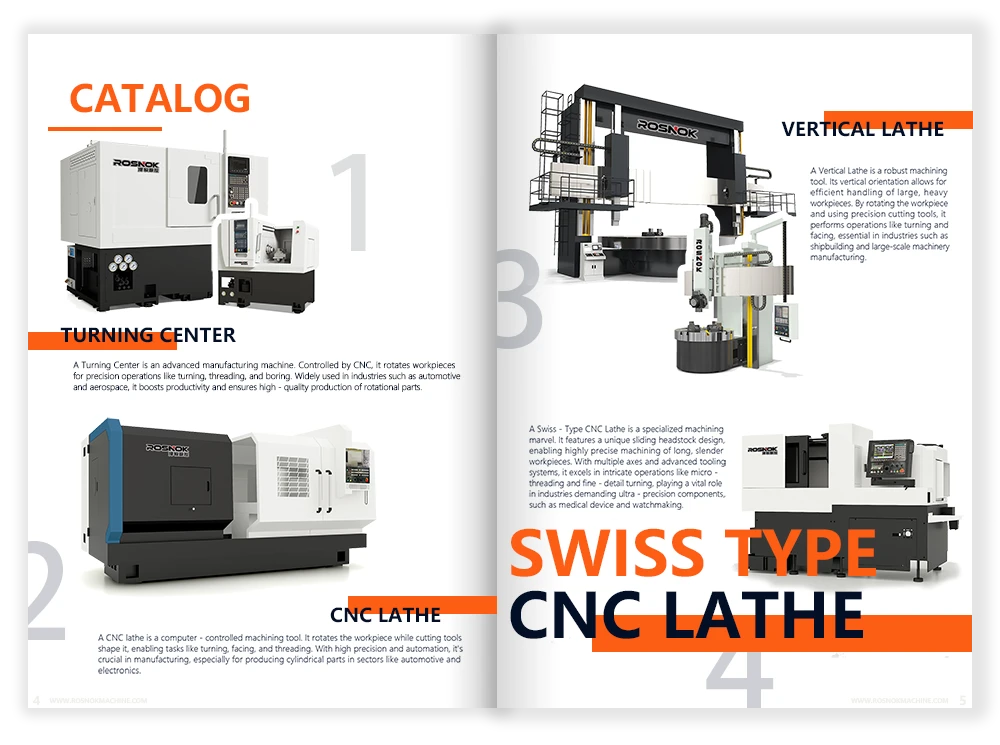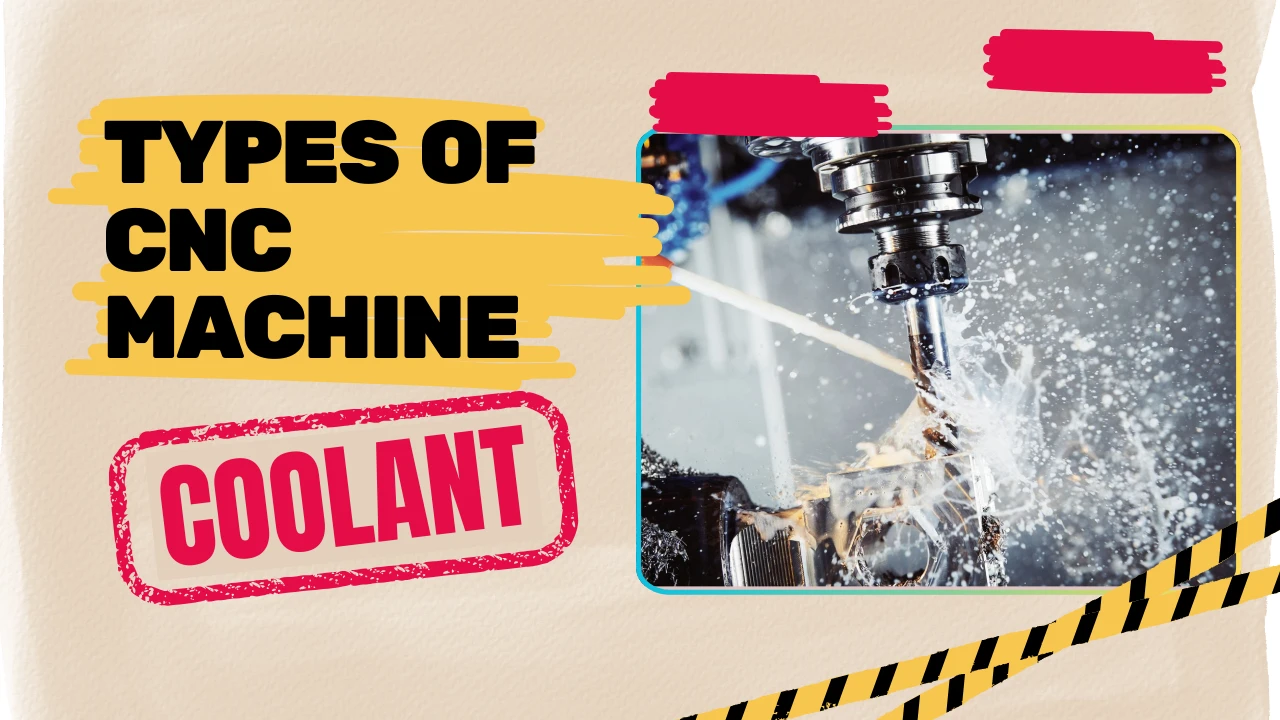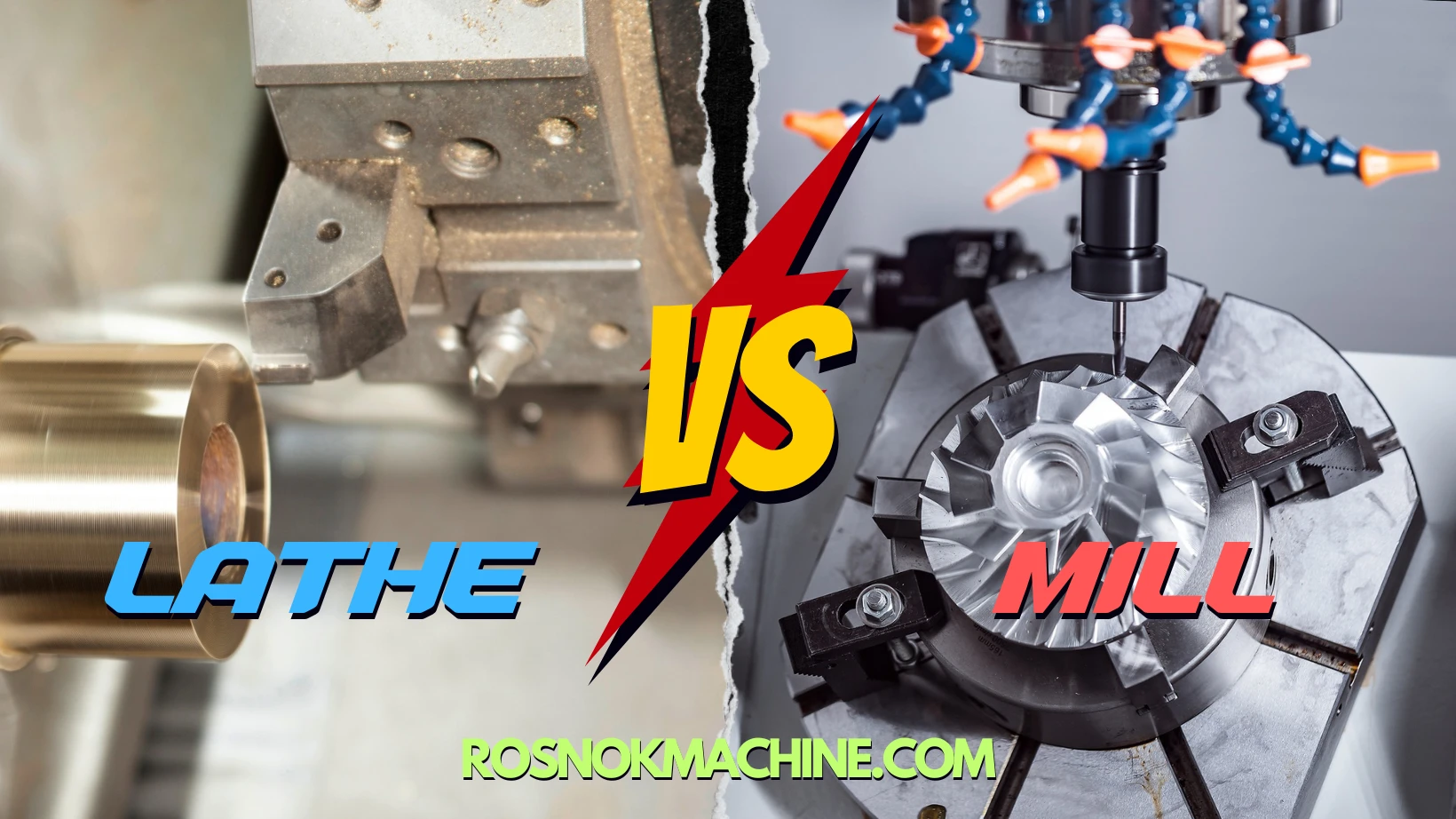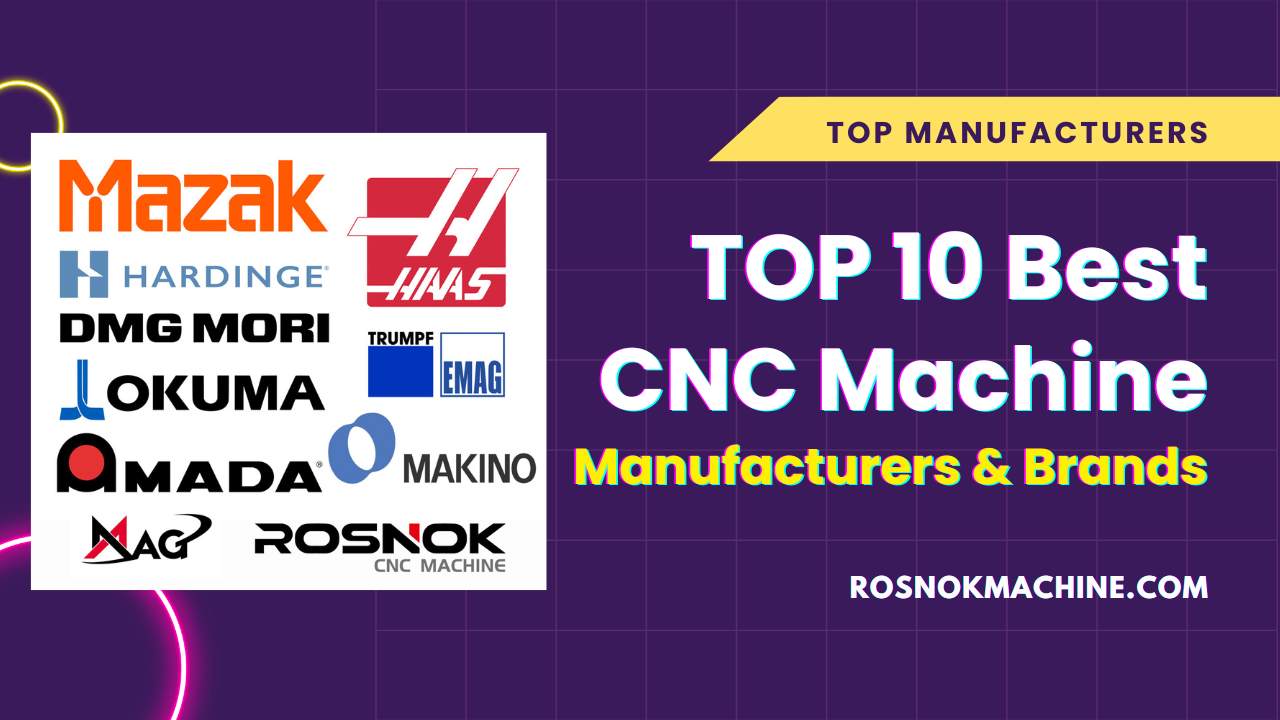Are your CNC tools wearing out too fast? Do you see inconsistent surface finishes or struggle with rising maintenance costs? Many shop owners and engineers face the same frustration. The problem often isn’t the machine itself—it’s the coolant being used.
The wrong coolant can silently eat away at productivity. It reduces tool life, increases cycle time, and raises total operating costs. Poor coolant selection also risks rust, foaming, and bacterial growth, which can harm both your machines and your workers. Without the right type of CNC machine coolant, even the best machining center cannot deliver its full potential.
For this reason, understanding the different types of CNC machine coolant and the criteria for selecting the right one is critical. This article provides an overview of coolant types and practical guidance on how to make the right choice.
What is CNC Machine Coolant?
CNC machine coolant, often referred to as cutting fluid, is a specially formulated liquid used during machining to control heat, reduce friction, and remove chips from the cutting zone. In modern manufacturing, it plays a critical role in maintaining dimensional accuracy and extending the life of both tools and machines.
Coolants are generally composed of water, mineral or synthetic oils, and various chemical additives. Each component serves a specific purpose: water provides cooling capacity, oils improve lubrication, and additives prevent rust, reduce foaming, or control bacterial growth. The balance of these elements determines how effective a coolant will be in different machining conditions.
Rather than being a minor support fluid, coolant is a decisive factor in machining performance. It directly affects tool wear, surface finish, cutting speed, and overall production efficiency. This is why understanding the types of CNC machine coolant is the foundation for making the right choice in different production environments.
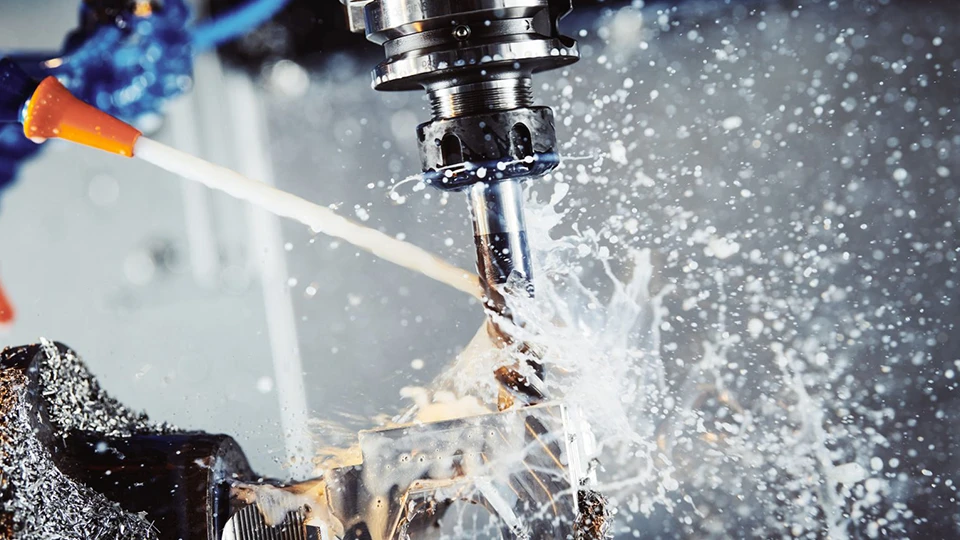
How Do CNC Machine Coolant Systems Work?
A CNC machine coolant system operates as a closed-loop circulation system designed to deliver coolant precisely to the cutting zone. At its core, the process starts with a storage tank or sump where the coolant mixture is held. From there, pumps move the fluid through pipes and nozzles, directing it toward the interface between the cutting tool and the workpiece. The fluid absorbs heat generated during cutting, lubricates the contact surfaces, and flushes chips away from the cutting area.
A typical coolant system consists of several key components. The reservoir stores the coolant, often equipped with filters or separators to remove debris and tramp oil. The pump determines flow rate and pressure, which can vary from low-pressure delivery for standard operations to high-pressure systems for deep-hole drilling and high-speed machining. The nozzles or through-spindle channels ensure the coolant reaches the tool edge directly, minimizing thermal shock and improving chip evacuation. Finally, return channels bring the used coolant back to the sump, where it is filtered and recirculated.
The effectiveness of this system depends not only on the coolant type but also on how well it is delivered and maintained. Proper flow ensures stable cutting temperatures, prevents tool breakage, and reduces downtime caused by chip accumulation. For this reason, understanding how a coolant system works is as important as selecting the right types of CNC machine coolant—both determine the reliability and efficiency of the machining process.
Types of Coolant Delivery Systems in CNC Machines
Coolant delivery is just as important as the coolant itself. Even the best fluid will not perform well if it cannot reach the cutting zone in the right volume, direction, and pressure. CNC machines therefore employ different coolant delivery systems depending on the material, process, and production requirements.
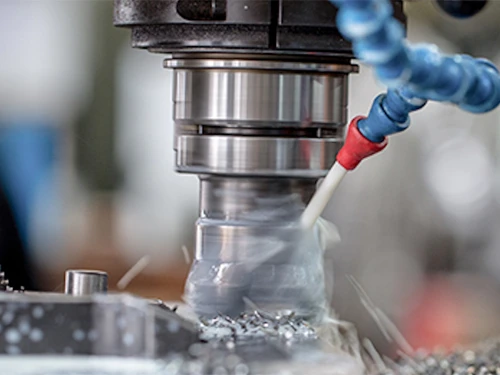
Flood Cooling
Flood cooling is the most common system, where coolant is pumped from the reservoir and sprayed through nozzles in a steady stream onto the tool and workpiece. It provides good heat removal and chip flushing, making it suitable for general milling, turning, and drilling. However, it consumes a large volume of coolant and can cause misting if not properly managed.
Mist Cooling
Mist cooling atomizes coolant into fine droplets using compressed air. This system uses less fluid than flood cooling and improves visibility around the cutting zone. It is often applied in light machining or where full flood is impractical. The drawback is potential health and safety concerns due to airborne mist, which requires proper ventilation and operator protection.
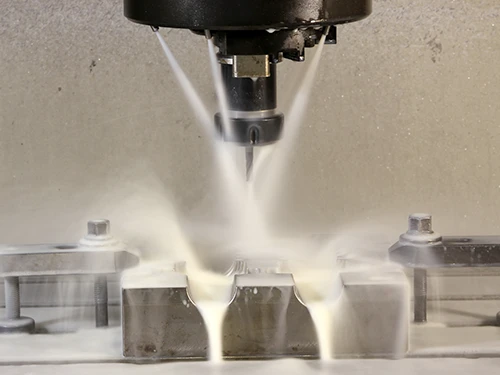
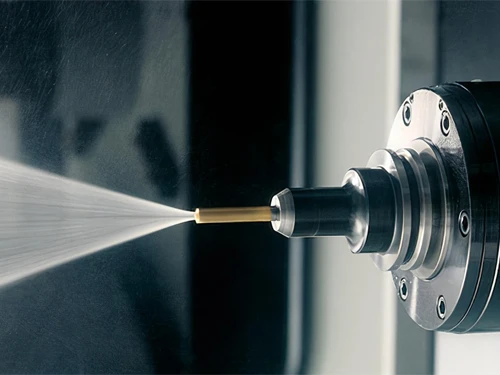
Through-Spindle Coolant (TSC)
Through-spindle coolant delivers fluid directly through the machine spindle and tool to the cutting edge. It is especially effective in deep-hole drilling or high-speed milling, where standard flood cooling cannot penetrate chips. TSC improves tool life and reduces cycle time, but it requires a high-pressure pump system and compatible tooling, which increases cost.
Minimum Quantity Lubrication (MQL)
MQL sprays a very small amount of oil mixed with air directly onto the cutting interface. Instead of cooling with high volumes of liquid, it focuses on lubrication while minimizing fluid waste. MQL is valued in aerospace and automotive machining for its environmental benefits and reduced disposal costs. Its limitation is that it may not handle very high heat loads, so it is not suitable for all processes.
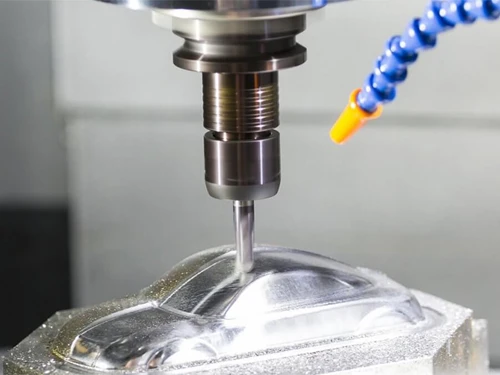
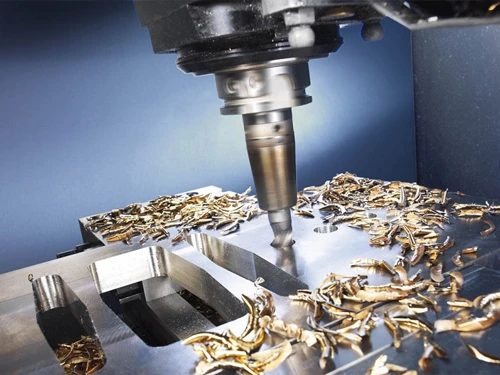
Dry Machining
In dry machining, no liquid coolant is used at all. Instead, advanced cutting tools with special coatings and machine designs handle the heat and friction. Dry machining is common for certain aluminum alloys and cast iron, and it eliminates coolant disposal entirely. However, it places high demands on tool material, geometry, and process control, making it viable only in specific applications.
Types of CNC Machine Coolant
CNC coolants are commonly grouped into four categories. Each balances cooling capacity, boundary lubrication, cleanliness, bio-resistance, and cost differently. The right choice depends on material, process, delivery method, and shop maintenance capability.
Soluble Oil Coolants
Soluble oil coolants, also known as emulsion coolants or water-soluble oils, are oil-in-water emulsions that turn milky when mixed. They usually contain mineral oil blended with emulsifiers, corrosion inhibitors, and additives to stabilize the mixture. Soluble oils are widely used in general machining, particularly turning and milling of steels. They are valued for their strong lubricity and cost-effectiveness, making them a popular choice in workshops that handle a broad range of jobs. However, soluble oils require careful maintenance; without proper monitoring, they are prone to bacterial growth and can leave residue on machines.
Pros
- Strong lubrication, ideal for steels.
- Versatile for general-purpose machining.
- Economical and easy to source.
Cons
- Susceptible to bacteria and odor issues.
- Residue buildup on machines and parts.
- Sensitive to water quality.
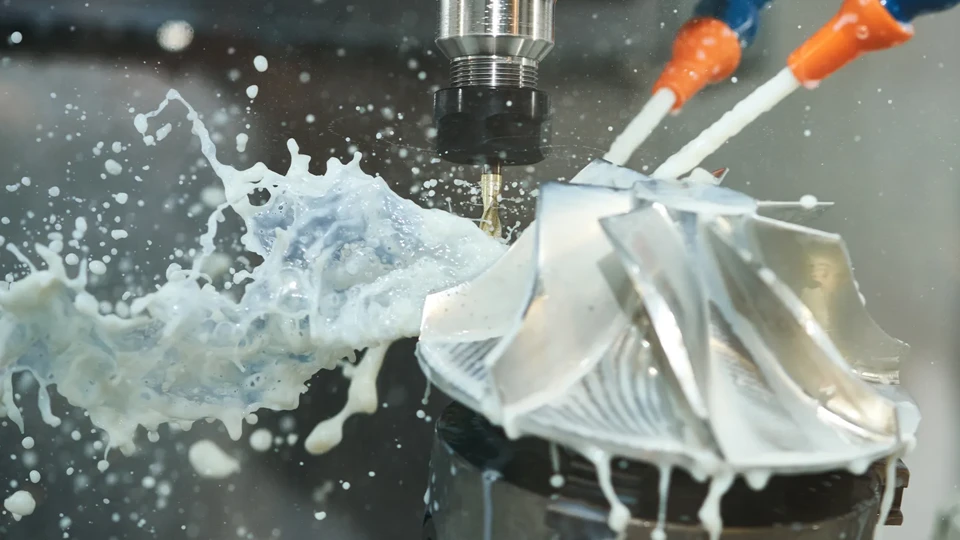
Synthetic Coolants
Synthetic coolants, sometimes referred to as water-based synthetics or simply synthetic cutting fluids, contain no oil and form clear solutions when mixed with water. They are engineered to maximize cooling and cleanliness, making them especially effective for high-speed machining and grinding. Because they resist bacterial contamination and leave little residue, synthetics reduce maintenance demands and keep machines cleaner. Their main limitation is lower lubricity compared to oil-rich coolants, which can be a drawback in heavy-duty cutting operations.
Pros
- Excellent cooling capacity, suitable for high-speed machining.
- Clean operation with minimal residue.
- Longer sump life and strong resistance to bacterial growth.
Cons
- Lower lubricity in heavy cutting.
- Potential staining on some aluminum alloys if run too lean.
- Higher cost than soluble oils.
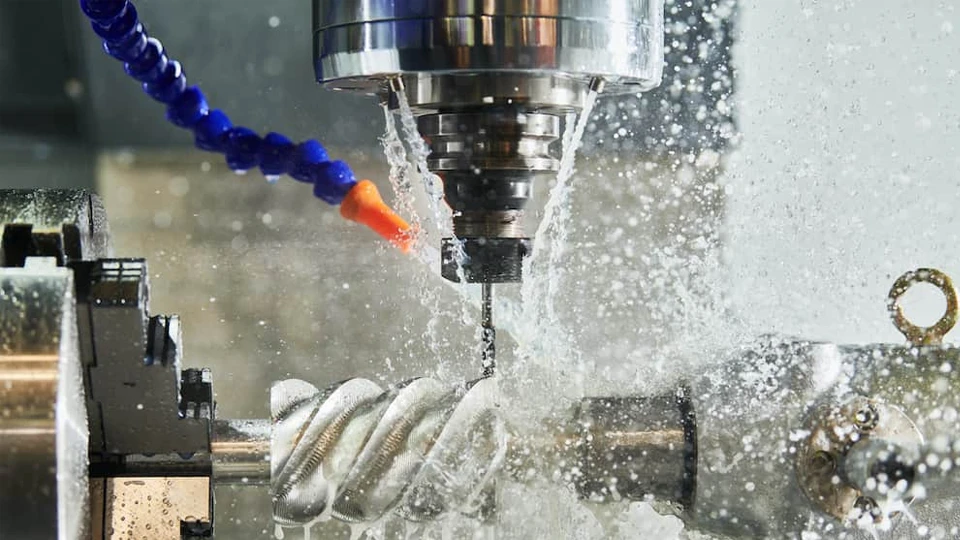
Semi-Synthetic Fluid Coolants
Semi-synthetic coolants, also called micro-emulsions in some references, combine a small amount of oil with a synthetic base, creating a translucent fluid. They are designed to balance cooling efficiency with lubrication, making them versatile for shops handling different materials. Semi-synthetics typically resist bacteria better than soluble oils and generate less residue, but they still require concentration control and cost more than basic emulsions.
Pros
- Balanced cooling and lubrication.
- Better cleanliness and bio-resistance than soluble oils.
- Suitable for mixed-material job shops.
Cons
- More expensive than soluble oils.
- Require regular monitoring of concentration.
- Not as specialized as synthetics or straight oils.
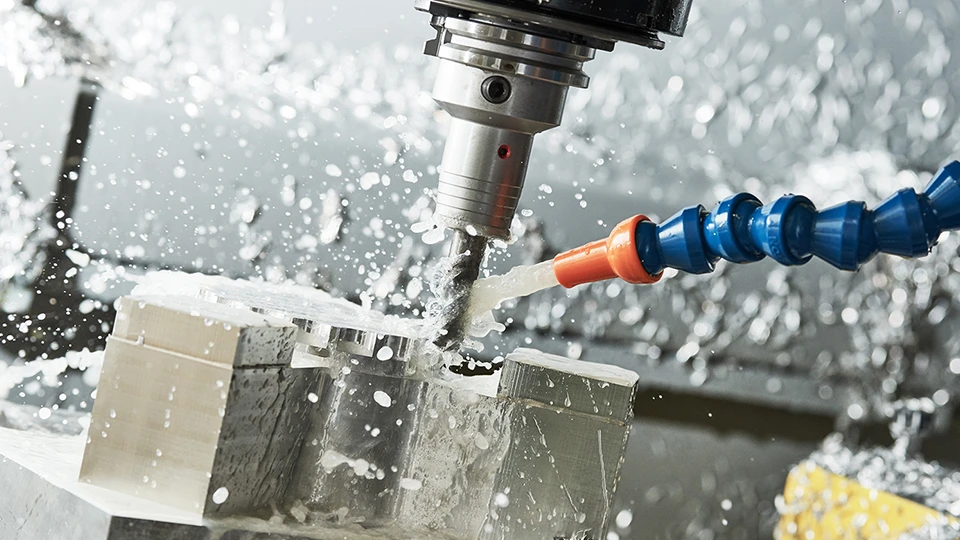
Straight Oils (Neat Cutting Oils)
Straight oils, often called neat oils or simply cutting oils, are undiluted mineral or synthetic oils, often blended with extreme-pressure additives like sulfur, chlorine, or phosphorus. They are used in demanding operations such as threading, broaching, or deep-hole drilling, where lubrication is critical. Straight oils provide excellent surface finishes and protect against built-up edge formation, but their cooling ability is poor. They also generate smoke and mist during cutting, requiring effective ventilation and strict handling.
Pros
- Maximum lubrication for tough materials.
- Superior tool life in tapping, threading, and broaching.
- Excellent surface finish in slow, heavy cuts.
Cons
- Limited cooling capacity, unsuitable for high-speed machining.
- Smoke and mist hazards; requires strong ventilation.
- Higher environmental and disposal costs.
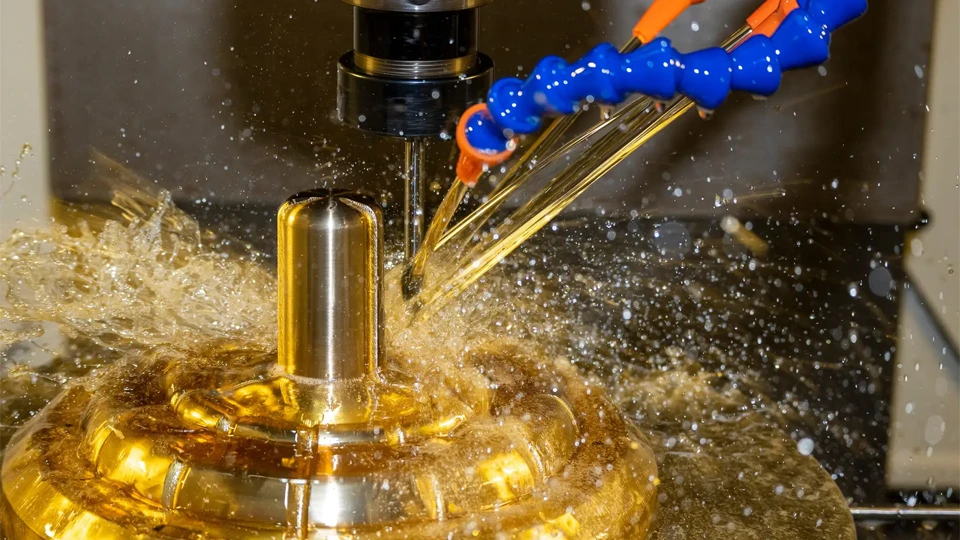
Understanding Coolant Concentration in CNC Machines
Coolant concentration refers to the ratio of concentrate to water in a working solution. It is a decisive factor in how the fluid performs during machining. Too much concentrate increases cost, foaming, and operator discomfort; too little weakens lubrication and corrosion protection, leading to rust, bacterial growth, and reduced tool life. Maintaining the correct balance is essential for stable machining results.
In practice, each material and process requires a slightly different coolant concentration. Aluminum machining usually favors lower concentrations to avoid staining, while steels need higher levels of lubricity to resist wear. Grinding, which demands maximum cooling, often uses leaner synthetic solutions, whereas threading or broaching requires rich, oil-heavy formulations. The key is to match the concentration not just to the coolant type, but also to the machining application.
Shops typically monitor concentration with a handheld refractometer (Brix scale). By sampling coolant directly from the sump, operators can verify whether the concentration is within the target range. Regular checks prevent bacterial growth, foaming, and tool failure, while ensuring consistent surface finish and productivity.
| Process | Carbon & Alloy Steel | Aluminum | Cast Iron | Stainless Steel | Titanium |
|---|---|---|---|---|---|
| Milling | Soluble Oil / Semi-Synthetic (7–10%) | Semi-Synthetic / Synthetic (5–7%) | Synthetic (4–6%) | Semi-Synthetic (8–10%) | Semi-Synthetic (8–10%) |
| Turning | Soluble Oil / Semi-Synthetic (7–10%) | Semi-Synthetic / Synthetic (5–7%) | Synthetic (4–6%) | Semi-Synthetic (8–10%) | Semi-Synthetic (8–10%) |
| Drilling | Semi-Synthetic (8–10%) | Synthetic (6–8%) | Synthetic (4–6%) | Straight Oil / Semi-Synthetic (10–12%) | Straight Oil (100%) |
| Grinding | Synthetic (4–6%) | Synthetic (3–5%) | Synthetic (3–5%) | Synthetic (5–7%) | Synthetic (5–7%) |
| Threading Broaching | Straight Oil / Semi-Synthetic (10–12%) | Semi-Synthetic (8–10%) | Semi-Synthetic (8–10%) | Straight Oil (100%) | Straight Oil (100%) |
Key Factors in Choosing CNC Machine Coolant
Each workshop has different machines, materials, and production goals, and the coolant must match these variables. Choosing poorly can shorten tool life, reduce surface quality, or raise long-term operating costs. The following factors are the most important when evaluating which coolant to use.
Workpiece Material
Different metals respond differently to coolant chemistry.
- Aluminum is prone to staining and foaming, so low-concentration synthetics or semi-synthetics are preferred, often with special “Al-safe” additives.
- Carbon and alloy steels demand higher lubricity, making soluble oils or semi-synthetics more effective.
- Stainless steel and titanium are difficult-to-machine materials that generate high heat; they benefit from semi-synthetics with strong EP (extreme-pressure) additives or, for tapping and threading, straight oils.
- Cast iron machines best with synthetics, which flush chips efficiently and keep machines cleaner.
Machining Process
Coolant must also match the type of operation.
- Milling and turning require balanced cooling and lubrication, making semi-synthetics a good all-round choice.
- Drilling and deep-hole machining benefit from high-pressure delivery and fluids with good penetration, often synthetics or enriched semi-synthetics.
- Grinding generates fine particles and constant friction; clear synthetic coolants at lean concentrations provide strong cooling and visibility.
- Threading, tapping, and broaching are boundary lubrication-dominated processes where straight oils or high-concentration emulsions protect against built-up edge and tool breakage.
Production Scale
- High-volume production demands stable, long-lasting coolants that resist bacteria and require minimal maintenance downtime. Semi-synthetics and synthetics are preferred because they maintain sump life and consistency.
- Small-batch or prototyping shops may prioritize versatility and lower upfront cost. Soluble oils, though higher maintenance, can be suitable here.
Cost, Maintenance, and Disposal
Coolant costs extend beyond purchase price.
- Frequent sump changes, waste disposal fees, and filtration systems can far outweigh the cost of the concentrate itself.
- Neglecting coolant maintenance leads to bacterial contamination, foul odors, and operator health issues.
- Proper management—regular concentration checks, filtration, and timely replacement—saves money in the long run.
Water Quality and Machine Compatibility
Coolants mixed with poor-quality water (high hardness, high chlorides, or unstable pH) often suffer from foaming, emulsion breakdown, and corrosion. Using treated or deionized water is recommended in many cases. Compatibility with machine seals, paints, and filtration systems must also be checked, especially with synthetic and high-alkaline formulations.
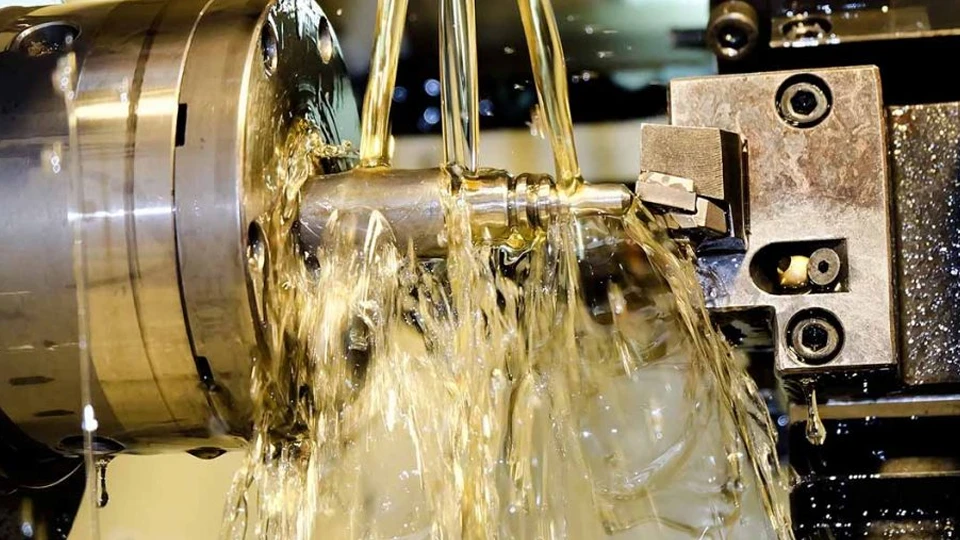
Conclusion
Across machining operations, coolant is not just an accessory—it directly affects tool life, surface finish, and production economics. By understanding the types of CNC machine coolant and how delivery methods and concentration settings interact with different materials and processes, shops can avoid common pitfalls and secure consistent results. The key takeaway is that coolant choice is strategic: it determines whether a CNC machine runs at its designed performance or falls short.
For companies considering upgrades or new equipment, coolant planning should go hand-in-hand with machine selection. Manufacturers like Rosnok, with expertise in CNC lathes, machining centers, vertical lathes, and Swiss-type lathes, integrate coolant compatibility into the overall machine design and training. This ensures customers not only acquire high-precision machines but also receive guidance on maintaining efficiency, safety, and long-term reliability in their coolant systems.
